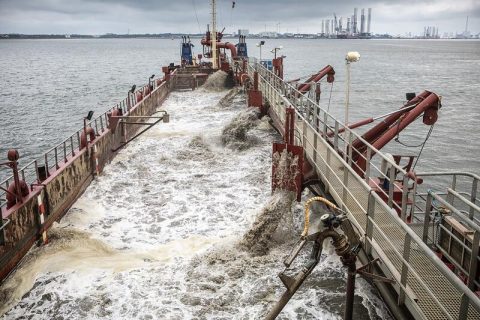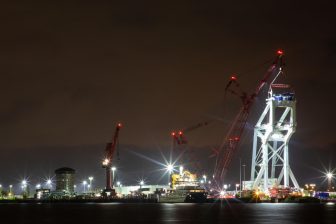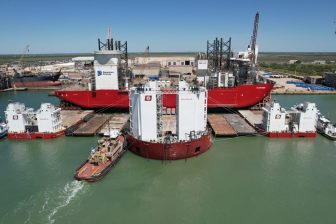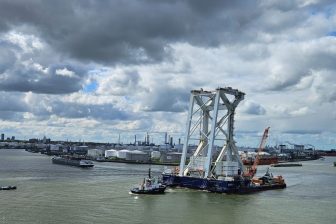
EU awards major grant to Port Esbjerg
Port Esbjerg received a grant of over 28 million euros from the European Union, to deepen its fairway from 9.3 to 12.8 metres by the end of next year. This will allow larger vessels to call at the Danish port.
This 221 million kroner grant from the Commission, and the European Union’s (EU) infrastructure fund, Connecting Europe Facility (CEF), is intended to consolidate the port’s position in Europe, its strategic importance as a NATO maritime hub, and as a centre for the green transition.
NATO Maritime Hub
An agreement to classify Port Esbjerg as a NATO port was signed on 22 August 2022, due to the port’s strategic location, close to the Skagerrak strait and the Suwalki Gap. The port is also a major intermodal hub with excellent connections to the rest of Europe. It is also the world’s largest wind energy base port, with a total area of over 4.5 million square metres, and therefore has sufficient capacity to temporarily store the unloaded aircraft and equipment.
Deepening the fairway is one of the necessary steps the port will need to take to meet NATO requirements. Further steps will include the expansion of the port’s railway terminal, and the conversion of more port land space normally dedicated to wind turbines into military areas with high-security requirements, in a manner that is minimally disruptive to commercial traffic.
Larger vessels
The grant will consolidate Port Esbjerg’s position, not only in Denmark but also Europe-wide, as an appointed Trans-European Transport Network (Ten-T port). Once the port is able to welcome large ocean liners and ro-ro vessels, which are ever-increasing in size, it can present itself as an alternative to northern continental ports such as Hamburg and Antwerp.
Furthermore, it will be an advantage in the green transition, specifically in the context of installing more wind power in the North Sea. As wind turbine components continue to grow in size, so do the MPP vessels central to the process. Safety will also improve with the navigation conditions, as it will give more leeway for manoeuvres.
You just read one of our premium articles free of charge
Register now to keep reading premium articles.




